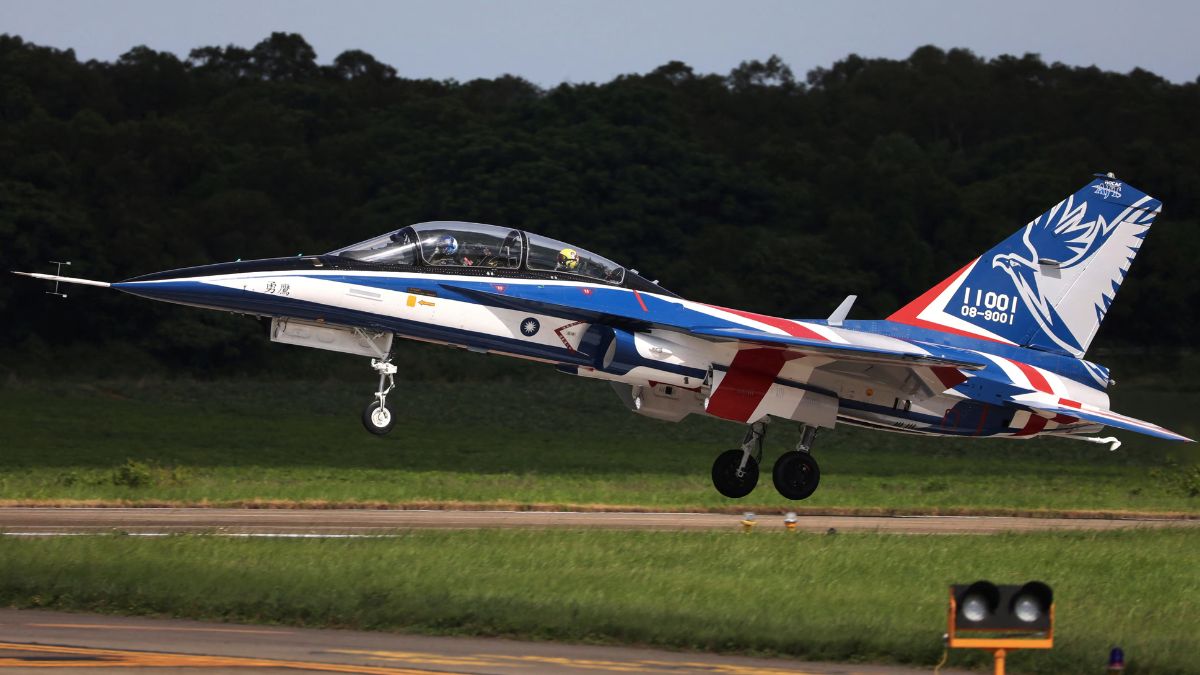Taiwan’s air force has grounded all of its advanced training jets after one of the aircraft crashed Saturday (February 15) due to “dual engine failure”– a military aviation mishap that occurred amid the island facing increasing pressure from China’s armed forces.
The locally manufactured Brave Eagle jet went down shortly after taking off from Chih Hang Air Base in southern Taitung County at 8:40 am, the Air Force said in a statement.
The pilot, identified as Major Lin, ejected safely and was taken to a hospital, where he was found to be in “good health” with no injuries.
While the air force cited a “dual engine failure” as the cause of the crash, a special task force has been set up to investigate the incident, officials said.
“All Brave Eagle advanced jet trainers (AJT) have been grounded for safety checks,” the statement added.
Taiwan crash comes amid China tensions
The crash comes at a time of heightened tensions between Taiwan and China, which claims the self-ruled island as part of its territory and has vowed to take control– by force if necessary.
The Chinese military has sharply increased its presence around Taiwan over the past year, frequently sending fighter jets, warships, and even high-altitude balloons into the island’s air defence identification zone (ADIZ).
Earlier this month, Taiwan’s defence ministry had reported detecting 19 Chinese military aircraft, eight naval vessels, one official ship, and one balloon operating near the island– all in the span of 24 hours.
Impact Shorts
More ShortsThe ongoing incursions are widely seen as part of Beijing’s broader strategy to normalize its military presence around Taiwan, stretching the island’s defense forces and testing their response times.
According to the Washington-based Institute for the Study of War, the People’s Liberation Army (PLA) flew aircraft into Taiwan’s ADIZ 255 times in January alone. Since May 2024, such incursions have surpassed 200 per month– well above pre-2024 levels.
China’s military pressure extends beyond aircraft. Earlier this month, Taiwan’s Ministry of National Defense (MND) reported an unprecedented six high-altitude balloons from China near Taiwan in a single day, with one passing directly over the main island.
In October 2024, Beijing conducted large-scale military drills simulating a blockade or quarantine of Taiwan, according to The Economist.
Taiwan’s modernisation bid stuttering
Taiwan has been working to modernise its military as part of efforts to counter China’s growing assertiveness. The Brave Eagle, developed by Taiwan’s Aerospace Industrial Development Corp., is a key part of the island’s strategy to train new pilots amid its aging fleet of fighter jets. The aircraft completed its first test flight in 2020 and was designed to replace Taiwan’s aging AT-3 trainers.
This is not the first time Taiwan has been forced to ground military aircraft due to safety concerns. In September 2024, it temporarily suspended operations of its Mirage 2000 fighter jets after a crash into the sea.
The French-made jets, purchased in 1992, remain a crucial part of Taiwan’s air force, alongside US-made F-16s and domestically built Indigenous Defense Fighters.
Speaking to reporters Saturday, President Lai Ching-te called on Taiwan’s opposition-controlled legislature to restore frozen portions of the defense budget, saying it was essential to “show our full support for the military.”
“In the face of China’s threats, the military is bravely protecting our country,” Lai said.
While the island’s defence industry has made strides in producing indigenous weaponry, it still relies heavily on US arms sales to bolster its capabilities.
With inputs from agencies
)